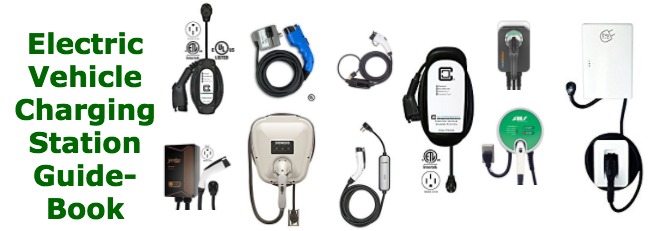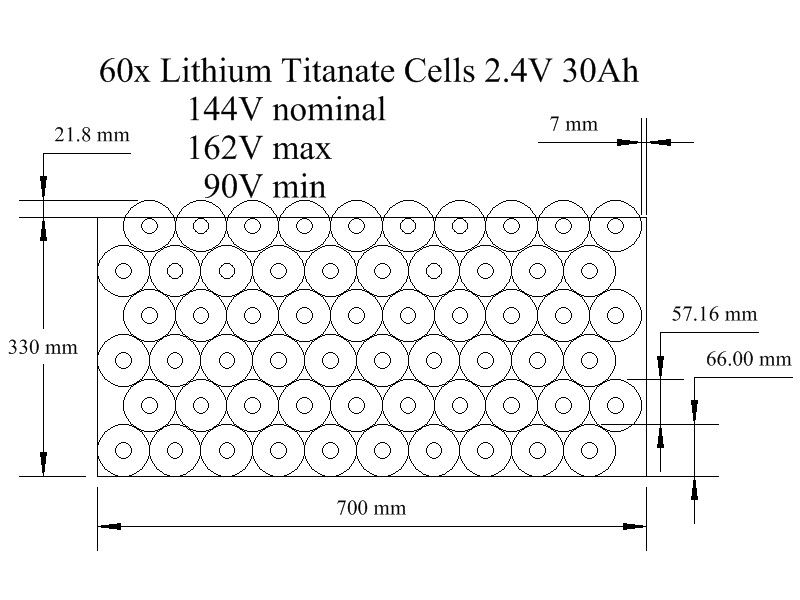Hi All,
When I bought the Vectrix, I knew it had a nearly end of life battery. Well, that nearly is gone and I need to replace it.
I know someone is going to jump straight to "Leaf" battery. It's my fall back plan, but my primary plan is to use 30AH Lithium Titanate.

There are several reasons:
1. LTO have incredibly long lives. 10,000 cycles if you do a 80% DOD, 20,000 if you do 60% DOD. 30 year shelf life.
2. LTO performs well in cold weather. I've noticed even NMC Lithium sags a lot more than it did in summer
3. LTO has an incredible genuine C rate - These "cheapies" can do 10C (300A), but the genuine Toshiba SCiBs have something like 280C rates - Almost supercapacitor.
4. I've already sunk 1/4 of the cost playing around with these.
Anyway, to get 150v, I need 60S. They are 66mm x 160mm, but the trick is, since they are cylindrical, you nest the next layer between the gap made by the previous layer. As such, the first layer is 66mm (as expected). The next layer only adds 55mm. Hard to explain, easy to show in a photo:

Doing this of course makes the battery wider because of the overhang, but only by 35mm.
So by my maths:
Width = easy - 160mm + length of bolts = 210mm Fits
Length = 10 x 66mm +35mm overhang = 695mm - Very close - Box will have to be thin.
Height 66mm + (54mm x 5) = 336mm - apparently the max is 340mm, and I haven't even considered the thickness of the box.
Is there any way I can make this work?



Using CAD, I make it a bit taller than your calculations:

I presume that due to the very low internal resistance of the Lithium Titanate cells there would be very little heat generated, therefore the cooling fans could probably be removed altogether. They wouldn't be able to circulate air between the cells as the cells would be too tightly packed together anyway.
With the fans removed, it may be possible to cut away part of the battery cover to allow for the slightly taller battery pack if necessary.
If you are only going to use 80% of the battery capacity, you would effectively end up with a battery capacity of just 24Ah, which is 43% less than the VX-1 Lithium (42Ah), and 60% less than the 60Ah Leaf modules.
If you don't need the additional range, then the Lithium Titanate cells should last a lot longer than the Vectrix motor controller and charger etc..
The Leaf conversion is very simple and straightforward in comparison to what would be involved to install these cylindrical cells.
Alan
You sir, are Awesome. Thanks for all the effort you put in to draw it up.
The last time I took it apart, it didn't look like it had any fans. This Vectrix has already been modified with with Thundersky 40Ah cells in the past, so perhaps the previous owner already removed them.
I do feel like I am making life hard for myself by going down this route... But Leaf Cells on the market are mostly from 2012 models. That means half their useful life is already over, and I'm putting my bike in storage for 2-3 years in 18 months time. That really means I will only get 18 months out of a Leaf cell build. My plan IS for the battery to outlive the bike, then get converted into 3 x 20 cells to run a 48v solar system for the rest of its life.
I'm 90% on pulling the trigger on this project, but every now and then, another complication scares me...
The specifications of the cells I looked at listed the standard discharge of just 1C (30Amps) with a maximum of 10C (300 Amps). Whilst I appreciate that the Vectrix is not going to exceed the maximum 300 Amps, it is going to draw a lot more than 30 Amps under sustained heavy load (climbing steep inclines and high speed cruising) which may have a negative effect on the cells.
I'm not sure how quickly the available capacity of those Chinese cells will drop compared to better quality Toshiba cells, but it would probably take many years before any loss in capacity became noticeable.
Click here to read the full article.
However, it is reassuring to know that you could theoretically use a 24kW charger (150A @ 160V) for a very quick charge as long as you didn't exceed the 150 Amps maximum charge current at lower battery voltages (e.g. when it is 80% discharged).
Have you been quoted a price for 60 cells including shipping/taxes etc.?
What BMS would you use to correctly balance and protect these cells?
Alan
The cells are $22usd per cell, + $20 per cell shipping when buying 10 at a time. I think I can get a better price for the shipping part at least for a batch of 60 - TNT quoted $600AUD (About 450USD?). Taxes for Australia would be 10% duty on import if the value was correctly declared by the sender.
I was looking at a Battrix Single Cell balancer, no full BMS. So all you do is attach one per cell, and as soon as it hits the predefined voltage, it starts bleeding off 2A as heat until it is back to the predefined voltage. It can communicate with a BMS to stop a charger, or stop a discharge when it hits 1.5v, but it seems extraneous to me, since I don't intend to run it flat, and my charger won't even get to 2.7v per cell. In theory, it is possible that with unbalance, I could run a single cell low on voltage, but not if I do a "balance" charge every now and again - set a charge voltage high enough to trip every balancer, but make the charge rate below 2A, and it should eventually bring everything back to balance.
The bike does run up to 120A for short periods, or around 4C. None of the hills around me (or around Sydney for that matter) are all that long, so I don't imagine that kind of draw for more than 10-15 seconds, which for most cells fit the definition of "Burst". It may shorten the life of the cells, but I doubt it will be noticeable over a 30 year/10k cycle, even if it halved the life of the battery.
I'll let you know if I end up going ahead on this. I am still concerned about the 2cm excess height. I also need to get over the worst part of the year in terms of busyness. I'm doing 8:30am to 1am days lately, and it's likely to stay like this until first week of July.
i had very bad exprience with Titanate battery. its always swell. you have to press it from outside
Leading LiFePO4 Battery manufacture and supplier
www.evlithium.com